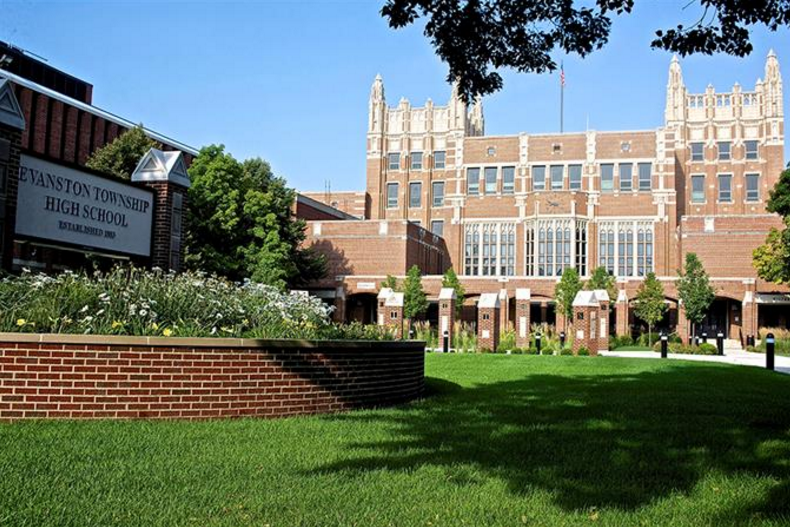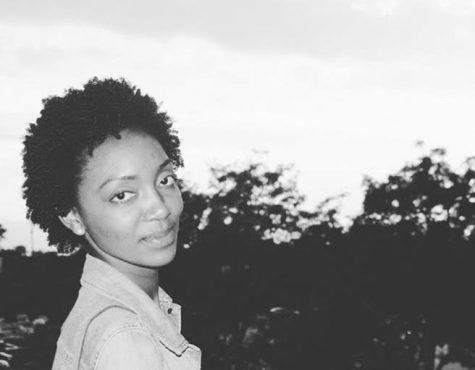New equity initiative aims at cultural shift for black male students
May 24, 2018
The administration implemented a new initiative, initially using the phrase “the year of the black male,” in order to shift environmental factors detrimental to black male achievement.
Announcing this year’s goal
On Aug. 23, 2017, prior to the start of the school year, The Evanston Roundtable published a guest essay by Superintendent Eric Witherspoon titled “Not Just Celebrating Diversity: Working Collectively to Achieve Equity” in which he stated the goal of the upcoming school year: “We are focusing assertively on the systemic inequalities facing our black male students,” Witherspoon said. “We are underscoring and confronting the disparities in academic outcomes for black male students.”
During the 2017 staff institute days on Aug. 24 and 25, Witherspoon — standing alongside Principal Marcus Campbell — expressed to the staff the necessity of shifting the school’s environment in order to be more suitable for black students. In doing so, Witherspoon used the phrase “this is the year of the black male.”
“When I called it the year of the black male, I called it that way to identify we can’t put this off anymore, we must do it now,” Witherspoon stated. “We must do it this year.”
Necessity for focus on black males
Historically, there has been a disparity between the experiences of black males and white females. Accord- ing to the 2017 Illinois Report Card, while both demographics met or exceeded statewide SAT standards at above average rates, 58 percent more white students achieved this than their black counterparts.
Twenty-five percent of black students met or exceeded SAT standards compared to the 16 percent state average, and 83 percent of white students met or exceeded SAT stands compared to the 49 percent state average.
“We looked at the data. White girls have the highest GPAs, have the lowest referrals. I told the staff, two years ago, ‘can we be the school for black males that we are for white females?’” Campbell said. “What I want us to be is a good school for all kids. I want to be a school where you can’t predict any outcome based on race.”
According to the administrative “Report on Student Discipline and Suspensions – 2016-17 School Year,” 66 percent of suspensions were black students, whereas 7.5 percent of suspensions were white students. However, only 29.4 percent of the school population is black as opposed to 44.1 percent of the school population which is white.
“We invest a lot in our students. Students come to our school and for the most part, now that we structured and de-tracked, they have the same classes and certainly the same opportunities. They have the same teacher, the same resources,” Wither- spoon said. “So the question becomes if we could get the same results for some of the kids then why is it so predictable on the color of a young man’s skin that we can’t get results for everyone.”
Moving pieces into place
Beginning in the late 2000s, ETHS began to mobilize their efforts to strive for equity. The Earned Honors curriculum has aimed to in- crease access to higher level classes for students. The administration, also, increased the usage of “alternative to suspension” programs such as Restorative Justice. Additionally, administration has implemented “Beyond Diversity” training for staff, allowing space to reflect on their own experiences with race and how it operates in systems.
Finally, beginning in the 2014-2015 school year, Campbell helped to implement a series of affinity- based summits. The Black Male Summit took place during said school year. The summits have since been expanded to other identities held within the school.
“We wanted to make sure that when we framed our summits that we were not thinking about the black male experience as a deficit model. To not say ‘you should go to class,’ ‘you should pull up your pants,’ ‘you should to do this. You should do that,’” said Campbell. “The thought is that we want to say ‘We recognize the struggles of what it means to be a black man in society and how can the school be more responsive to your needs.’”
Campbell, in an earlier interview, stated, “We started with the summit, but the summit was always a means to get us some place as a school.”
Attempting a school-wide cultural shift
“We can’t change systems with programs. We change systems with beliefs. I know some people want us to program ourselves out of this, you can’t do that,” Campbell explained. “What we’re talk- ing about is real institutional change, real systematic change which comes through examining the beliefs of the organization.”
In an attempt to make “real institutional change,” Camp- bell and Witherspoon expressed to teachers during the staff institute days the necessity of monitoring how they spoke to, treated and taught black males. This has since been reinforced by the department chairs through the course of the school year.
“There is no one type of black male. However, I think that within the classroom, teachers have to continue to get to know each student on a personal basis and under- stand what the barriers are, if there are barriers, to them being successful in the class,” English Dept. Chair Samoane Jones said. “That’s probably the most likely place to be able to support students of color, black males, to see them as individuals.”
The initiative has been targeted at individual classrooms and teachers through the leadership of department chairs. These chairs have addressed racial disparities in the breakdown of grades. Also, all staff have been told to reflect upon their implicit biases regarding their discipline of students.
“What happened in Star- bucks this weekend [April 12], I think is what happens in this building,” Campbell stated. “Black kids who are minding their own business get surveilled and policed and whites who are essentially doing the same thing — and white kids have told me this — don’t get written up. They aren’t under the same surveillance.”
Two separate policy changes, which were not derived from the initiative, have also been implemented. First, a change in dress code was implemented this year, brought about through the 2016-2017 student protest and student- administration collaboration. The new code accounts for historic policing of students — particularly black males — in the school. This was then followed up by a change in social probation.
Reactions
History teacher Ganae McAlpin-Toney stated, “If we are going to make it the year of something, everyone should be able to see what’s happening. I am sure there are things happening but it’s all too disjointed. We need to make sure it is one cohesive message that we are trying to get across at the school.”
Senior Jean Dorelus believes that he has been and should be put into a more active role in the school. “You can be as diverse as you want, but if the black population isn’t very visible and isn’t very involved, it doesn’t mean much. In this year and in the coming years, I definitely see all of our black men taking up leadership roles in the community,” Dorelus said.
Upon looking at what the future of this initiative could be, freshman Quinn Hughes said, “Once, we break down that blackness is different for everybody and it’s a spectrum of being and experiencing then we can really get into this idea of staying away from ‘this is how black people feel about this issue’. I think that part of that is allowing different voices into the space. So, if we only have Ta-Nehisi Coates speaking, I think we will continue to accept one black person per generation.”
Administrative conclusion
Reflecting on the implementation this year, Campbell noted promising initial results, also stating, “We’ve tried to filter it through every part of the organization; through administrators, department chairs, every place. But, I don’t think our messaging has been very consistent all year.”
“We are fighting against systematic racism that has been in process since at least the 1600s. So, I can image that the first seven months of school won’t change much of that,” Jones stated. “The moment the United States decided they were going to have slavery on the basis of race. That began a structure that we continue to fight against. The country has been standing on those laws that saw black people as only partially human. That has been happening longer than we have been fighting against it.”
Future years
In the future, developed from the talks given by Jeff Duncan Andrade, Campbell would like the school to partner with various organizations in the community in order to become the center of both “physical and emotional health for students.”
“Evanston is a very re- source rich town and there is a lot that we can do with those resources. The school being the center of health, there’s a way to do that in Evanston; but, we have to figure it out as a community,” Campbell explained.












